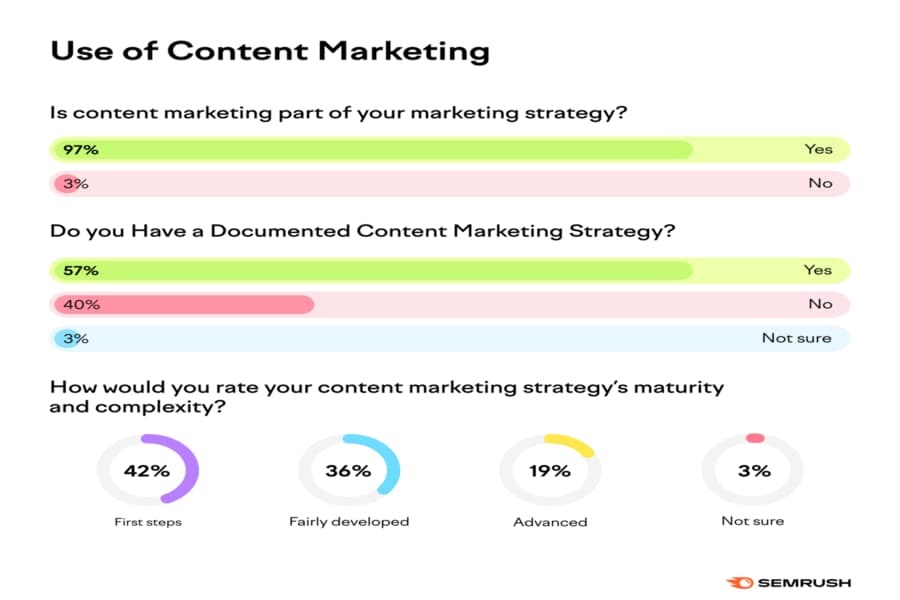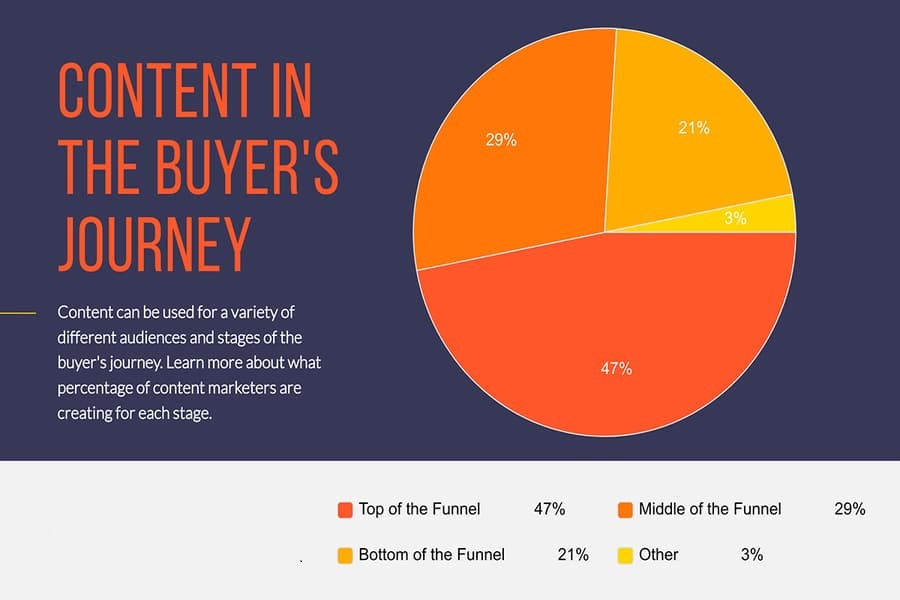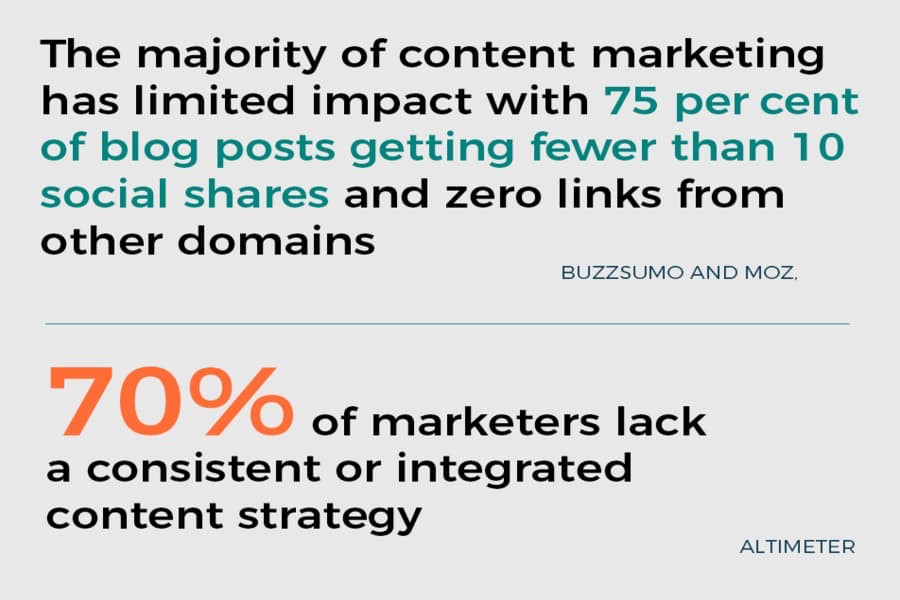Content marketing is the practice of creating and distributing valuable, relevant content to attract, acquire, and engage a clearly defined and measurable audience of interested consumers.
A successful content marketing strategy aims to create trustworthy relationships with customers through the use of quality, informative and engaging pieces. Once you have built trust through content marketing, you can then go on to sell them products or services. Content marketing can be used for promoting products or services as well as increasing brand awareness.
Content can be an article, blog post, video, or infographic that provides helpful information about your products or services. You can use this content to drive traffic to your site, build trust with potential customers and increase conversion rates by providing valuable information they want.
There are some key points you need to consider when it comes to content marketing:
- The purpose of writing the content should be clear from the beginning and this should be your main focus when creating the content.
- The way you write the content should be unique and relevant as much as possible so that readers can relate to it.
- You need to create a high-quality piece of content that will provide value for your target audience.
Start With the End Objectives
The first step in calculating content marketing ROI is to determine your goals. Before making any assumptions about how much money you will make from your website or blog, establish what those goals are and how you can reach them. You may want to start with a simple goal such as, “How many new customers can we gain through this campaign?”
Next, determine what type of content is most likely to result in that outcome. Is it a video? Images? Podcasting? Many different types of content can work for each of these goals.
If you want more leads or customers through your website, then video might be a good option.
If you want more followers on Twitter/X and Facebook, then consider using images for those platforms.
The key is to build a business, find a strategy that works for it, and stick with it!
Once you have zeroed in on your objective(s), break down your goals into smaller steps that can be tracked easily. For example:
- Increase traffic to your website by 20% and increase conversion by 10%.
- Increase social shares by 50%.
- Get 10 new subscribers per month.
Do you want to calculate your content marketing ROI, but don’t know where to start?
Contact Growth Hackers
How To Measure Targeted Revenue With the Traffic
If you are thinking about monetizing your content, you might be wondering how much revenue you should expect. When it comes to monetizing content marketing, several variables affect your ROI.
So, let’s take a look at the most important ones:
- The number of visits to your site. The more visitors you get, the higher your revenue will be.
- Customer loyalty. If people come back repeatedly, you can easily increase their lifetime value (LTV). This means that if a customer buys something from you once, they will probably buy something again.
- The number of pages viewed per visit. It depends on many factors (your landing page, ad copy, and so on).
- CPA (Cost Per Acquisition) or CPC (Cost Per Click) campaigns usually pay less than CPM campaigns because they require more clicks from users to generate revenue for publishers.
The target revenue for every content marketing campaign is different because every business has different KPIs. Some of the most common KPIs are:
- Ad Revenue
- Lead Generation
- Customer Lifetime Value (CLV)
- Cost per Acquisition (CPA)
In case the chosen KPI is ad revenue, then you need to calculate the targeted pageview count to reach there. For example, an ad network like Mediavine or Adthrive could pay 20-25 CPM. So, if you need to hit $50k per month, you will need 2 million pageviews a month.
So, let’s say you have a website that gets 10k pageviews on average per day, and your target market is the US population. You can calculate how many views you need per day to hit $50k in a month using this formula:
Daily Pageviews required = (targeted pageviews * cost per view) / (average daily site visits / 365 days in year)
If sales are the chosen KPI, then you will need to know your average conversion rate.
For example:
Let’s say you have a sales goal of $50k per month. So, at a 2% conversion rate, and a $10 profit margin, you will need 250k pageviews a month to hit your sales goal.
This may seem high for some businesses, but there are many ways that you can achieve this amount of traffic without spending too much money. If you’re running a site like Hubspot, then it would be straightforward to get that kind of traffic volume by creating blog posts and other content types that will rank well on Google.
Know Your Content Throughput
Now that we know how much traffic to get, the next step is to calculate your content throughput.
- SEO traffic — is sustainable, but can take anywhere from 6-14 months for an article to rank and bring traffic.
- Social media — can bring traffic more readily. But it is short-lived. So, you will need to crank up your output.
- Ads — there are many digital ad formats available, including Google Search Ads, Taboola Native Ads, and paid social. Taboola especially can be cost-effective for traffic at scale, but needless to say with every platform it’s important to keep ad spend in check to avoid cutting into your margins.
The next step is to calculate how much time and effort you put into creating each piece of content.
To do this, you need to know how much time it takes to write each article, or video, etc., and then multiply that by the number of views or downloads (you can use Google Analytics to see how many people actually read any given post).
For example: if you spent 20 hours writing a piece of content and it got 10,000 views on Facebook (and suggests that 100% of visitors read it), then your ROI would be 100%.
This calculation should be done with as much precision as possible so that you can compare different traffic sources against each other and see what works best for you.
For example, with SEO traffic, the target should be to get at least 300-500 pageviews per article per month.
So, you should have at least 800-1000 articles published to hit the 250K pageviews target.
Track and measure your content marketing ROI with us today!
Hire the Right Writers
Once you have your target article throughput prepared, the next step is to hire writers.
The first thing to understand is that most content marketing campaigns will require multiple writers. There are many reasons for this, but the main reason is that writers need to be able to cover all of a company’s topics, locations, and audiences.
For example, if a company has a blog focused on interior design and its readership is in the United States and Canada, then ideally, it needs two writers — one for each region.
Other factors can also affect your choice of writer. For example, some writers specialize in certain topics and industries (such as health or finance) while others have more general knowledge and experience.
Another consideration is how much time it takes to get articles written. If you have an in-house team of writers who are available when you need them, then this may not be an issue for you. But if you’re hiring freelance writers or working with other agencies, then there may be delays between conversations about the project and when it gets published online or in print media outlets (such as magazines).
Usually, you’ll want to hire a freelance writer if you don’t have any internal writers on staff or if your budget is small.
There are a few key differences between freelance writers and in-house writers.
- Freelance writers have their own unique skills, which make them perfect for a one-off job. In-house teams have to be hired long-term specifically for their expertise in specific areas.
- A freelance writer can contribute to your company’s content marketing strategy from any location around the world. They can work from home or in coffee shops, and they can write at any time of day or night. This means that you never have to worry about them being available when you need them; they can be part of the team 24 hours a day, 7 days a week, 365 days a year.
- In-house writers usually work in an office environment alongside other employees who are also writing content for your company website or blog. They often have regular shifts set up so that they’re present during business hours when they’re most likely to be working on important projects like SEO content or user manuals.
- The great thing about hiring freelance writers is that they’re experts in their field — there aren’t many people who know how to write content like this! If you’ve ever been stuck trying to come up with something interesting and unique for your site, then hiring a freelancer is the best way forward.
Closing Thoughts About Calculating Content Marketing ROI
The results of your content marketing strategy are not always instant. However, there are ways to make them more tangible to your business. By setting clear objectives and a plan, you can measure exactly how many dollars and cents you saved using a content marketing strategy, test multiple content pieces and strategies, and use this information to further the growth of your business. While the content ROI may not be always visible, you should nevertheless continue publishing quality, engaging content that generates organic traffic and provides real value to your potential customers.
Growth Hackers is recognized as one of the best content marketing agencies helping businesses from all over the world grow. There is no fluff with Growth Hackers. We help entrepreneurs and business owners track and measure their content marketing ROI, increase their productivity, generate qualified leads, optimize their conversion rate, gather and analyze data analytics, acquire and retain users and increase sales. We go further than brand awareness and exposure. We make sure that the strategies we implement move the needle so your business grow, strive and succeed. If you too want your business to reach new heights, contact Growth Hackers today so we can discuss about your brand and create a custom growth plan for you. You’re just one click away to skyrocket your business.








